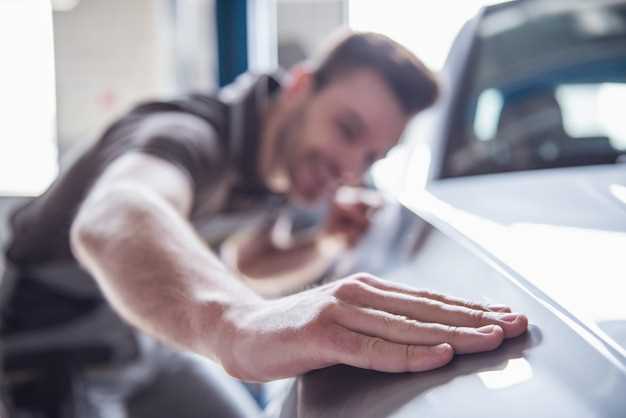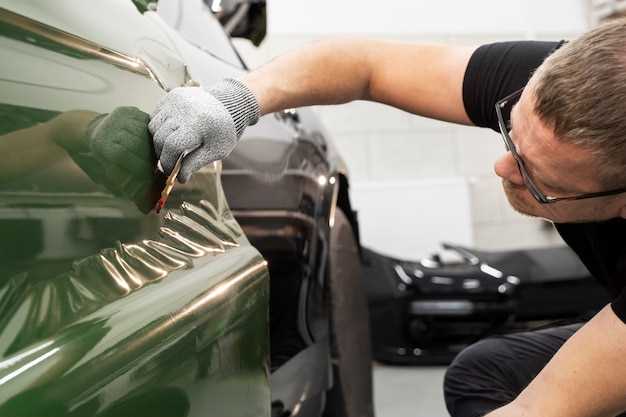
When it comes to selling your car, the condition of its exterior plays a crucial role in determining its market value. Among the various factors that potential buyers consider, scratches can significantly impact their perception of the vehicle’s overall condition. A car with noticeable blemishes may signal to buyers a lack of care or maintenance, leading them to question the vehicle’s reliability and appeal.
Addressing scratches before listing your car for sale can enhance its appearance and improve the first impression it makes on buyers. A well-maintained, scratch-free exterior not only attracts more interest but can also justify a higher asking price. Buyers are more inclined to invest in a vehicle that appears pristine and has been taken care of, thus understanding how small imperfections can affect the perception of value is vital in the selling process.
Furthermore, the cost of repairing scratches often pales in comparison to the potential increase in selling price. Evaluating whether to invest in minor repairs before putting your car on the market can be a strategic decision that pays off in the long run. This article will explore the benefits of fixing scratches and how they shape buyer perception and sale outcomes.
Impact of Scratches on Buyer Perception

When selling a car, the overall appearance plays a crucial role in attracting buyers. Scratches can significantly influence how potential buyers perceive the vehicle and, consequently, their willingness to make a purchase.
Buyers often associate scratches with poor maintenance and neglect. A car that appears well-cared-for suggests reliability, while visible imperfections may lead to doubts about the vehicle’s overall condition. Here are some key points regarding the impact of scratches on buyer perception:
- First Impressions: Scratches can diminish the initial appeal of the car, leading buyers to form negative opinions right away.
- Value Assessment: Visible flaws, including scratches, may lead buyers to believe the vehicle is less valuable, potentially resulting in lower offers.
- Trust Issues: Scratches can raise concerns about hidden damage or mechanical issues, making buyers hesitant to proceed with the purchase.
- Negotiation Leverage: Buyers may use scratches as leverage to negotiate the price down, viewing the cost of repairs as a factor that should lower the vehicle’s asking price.
- Market Positioning: In a competitive market, cars in better condition tend to sell faster. Scratches can put a vehicle at a disadvantage compared to similar models without imperfections.
Ultimately, the presence of scratches can lead buyers to question the vehicle’s value and reliability. Addressing these imperfections before selling can help enhance the car’s appeal and foster more favorable buyer perception.
Cost-Benefit Analysis of Scratch Repair

When considering whether to repair scratches on your vehicle before selling it, a thorough cost-benefit analysis is essential. The decision can significantly impact the vehicle’s resale value and attractiveness to potential buyers.
Costs associated with scratch repair include the price of materials, such as touch-up paint and polish, or professional services if you choose to hire a technician. DIY solutions can save money but might require additional tools or equipment. It’s crucial to assess how much you are willing to invest compared to the expected return.
On the benefit side, eliminating visible scratches can enhance the car’s appearance, making it more appealing to buyers. A well-presented vehicle can command a higher price and reduce the time spent on the market. Many buyers perceive scratches as indicators of neglect, which may lower their willingness to negotiate favorably. A car with a pristine exterior can instill confidence in its overall maintenance and condition.
Moreover, repairing scratches can lead to a better overall perception of the vehicle, which may capture the attention of more buyers, especially those looking for a high-quality used car. In a competitive market, aesthetics play a crucial role in decision-making processes for buyers.
Ultimately, the decision to repair scratches should weigh the associated costs against the potential increase in resale value. By evaluating these factors carefully, sellers can make an informed choice that aligns with their financial goals while maximizing appeal to buyers.
DIY vs. Professional Repair Options
When considering whether to repair scratches on your car before selling it, you have two main options: DIY repairs or hiring a professional. Each approach has its advantages and disadvantages, which can significantly impact the overall impression your car makes on potential buyers.
DIY repairs can be cost-effective and convenient. Many products are available in the market designed specifically for scratch removal, allowing you to address minor blemishes without professional assistance. Using a scratch repair kit may take only a few hours, and you have the flexibility to work at your own pace. However, the results may vary based on your skills and the severity of the scratches. If not done correctly, you might end up making the scratches more noticeable, which could deter buyers.
On the other hand, professional repair options often yield more reliable results. Skilled technicians have access to advanced tools and techniques that can restore your car’s appearance to a high standard. This can enhance the car’s value and allure to potential buyers, as they may be more inclined to purchase a vehicle that looks well-maintained. However, professional repairs come at a cost, and you will need to weigh whether this expense is justified in relation to the potential selling price.
Ultimately, the decision between DIY and professional repairs depends on the extent of the scratches, your budget, and how much you value the first impression on prospective buyers. Taking the time to assess these factors can ensure you make the best choice for attracting the right buyer and maximizing your car’s resale value.






